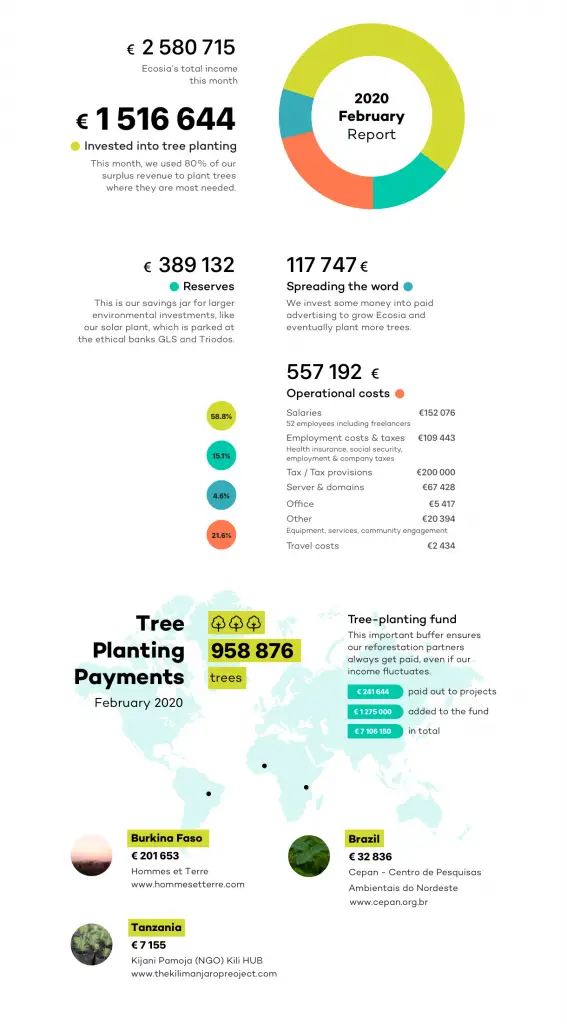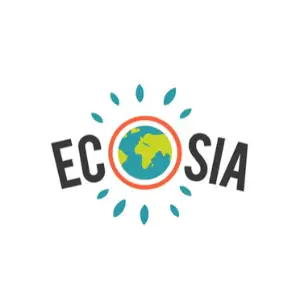If we were to ask a random group of people to list down the search engines that they’ve used, most would say Google. A few of them, particularly millennials, might even say Bing or Yahoo.
And that’s because Google has had more than 90% market share among search engines for almost two decades now.
Even in Dec 2009, when Christian Kroll, founder of Ecosia decided to launch the eco-friendly search engine, Google had more than 90% market share.
So why did he even bother starting another search engine? Well, his desire to build a business that would have a positive social impact on the world that led him to launch Ecosia.
After earning a degree in Business Administration, Christian Kroll went on a trip around the world.
When he set up camp in Argentina, he learned about the reforestation projects in the Atlantic Rainforest in Argentina and Brazil. At that time, he even read a book by Thomas L. Friedman called ‘Hot, Flat and Crowded’ which helped him understand how deforestation contributes to climate change.
Realizing that planting trees could help neutralize carbon dioxide emissions globally, Christian Kroll started the eco-friendly Berlin-based search engine Ecosia, which now has over 15 million active users & has helped plant over 91 Million trees.
But how exactly does Ecosia make money?Let’s find out.
Ecosia’s Business Model
Ecosia’s main sources of income are:
- EcoAds
- EcoLinks
Ecosia earns money the same way that Google does, i.e. through clicks on advertisements that are shown above and beside the search results. It earns a few cents from every click on an ad, delivered by its partner Bing, or a fixed portion of the purchase price made through an affiliate link.
The amount of money Ecosia earns per ad click depends on the value and the competition for the keyword, which means a click on an ad using lucrative keywords will be able to finance multiple trees, whereas other ads may only finance a fraction of it.
On average, Ecosia earns an average of 0.5 cents (EUR) & it takes about 45 searches to finance the planting of one tree. The math behind it is simple — it costs Ecosia’s tree planting partners approximately 0.22 EUR to plant a tree and when you divide 22 cents by 0.5 cents, it comes around to about 45 searches to plant a new tree.
However, the average varies depending on the number of clicks on ads and the amount of search ad revenue generated. Currently, Ecosia funds the planting of a new tree every 0.8 seconds.
Ecosia also has additional features such as Ecosia Travel, which helps plant an average of 25 trees when users book a hotel through it. A small amount of income also comes from the commission earned from their online store, which helps fund the planting of 20 new trees for every t-shirt that is sold.
80% of the profit that Ecosia earns from advertisements is donated to tree planting organizations all over the world. In an attempt to build trust and maintain transparency, Ecosia publishes its monthly financial reports on its websites, which shows the amount of money that they make from searches made by users and the percentage of their revenue that goes towards the planting of trees.
Here’s Ecosia’s financial report for February 2020:

Google Vs Ecosia
Market Share: As of Jan 2020, Ecosia had a market share of 0.14% while Google had a market share of 91.54%.
Earnings: According to the financial reports published by Ecosia, its revenue for January 2019 was over 1 million EUR.
Unlike Ecosia, Google is much more than a search engine, having various other sources of income like YouTube ads, Google Cloud, app store revenue etc. In 2019, Google Search’s revenue amounted to $98.1 billion, YouTube’s Ad Business contributed $15.15 billion and Google’s Cloud Business generated revenue of $8.92 billion.
Privacy: Unlike Google, Ecosia neither creates personal profiles of users based on their search history nor does it use tracking codes. Instead, it encrypts all user searches and even anonymizes it within a spam protection period of one week.
User Experience: Even with the abundance of ads, Google’s user experience still surpasses Ecosia’s user experience.
While Ecosia takes privacy seriously, Google collects data from users, which makes it capable of providing more relevant search results and better user experience. For example, Google uses location data to provide more relevant results for queries like “restaurants near me”
Environment: Although Google beats Ecosia in factors like revenue & user experience, the environment is one area Ecosia leads in.
Google has used carbon-neutral servers (for every kilowatt-hour of energy consumed, a matching kilowatt-hour of renewable energy is added to a power grid) since 2017, while Ecosia not only runs on 100% renewable energy but is also building solar plants as it grows.
One search on Ecosia results in the removal of 1 kg of carbon dioxide from the atmosphere and about 45 searches fund the planting of a new tree. This in turn, largely benefits the environment; preventing erosion, protecting crops, restoring depleted soil and creating habitats for endangered animals.
Ecosia’s Impact On The Environment
Ecosia has invested over 12 million euros in the plantation of over 91 million trees in over 9,000 planting sites. Currently, they support over 20 tree planting projects in 15 different countries including Brazil, Ethiopia, and Tanzania.
Till the end of 2010, Ecosia’s funds went to a program by WWF Germany which protected the Juruena National Park in the Amazon Basin. Then in 2011, Ecosia raised over 250,000€ and donated to the Plant a Billion Trees program run by The Nature Conservancy from July 2013 to September 2014. Ecosia then proceeded to start funding reforestation in Burkina Faso in 2015, which was a part of the Great Green Wall project.
In 2018, they began building their own solar plants and currently have solar plants in Aue and Schinne in Germany.
Ecosia always steps forward when it comes to rainforest regeneration projects as it did during the disastrous fires in the Amazon rainforest. With people looking to help in any way that they can, Ecosia saw an 1150% increase in daily downloads in one day. In response, Ecosia pledged to plant a total of 3 million trees in Brazil over the next year.
Ecosia carefully selects tree planting projects on the basis of where trees are needed the most. Recently, Ecosia even started an interesting podcast that tells the background and captivating stories behind their tree planting projects.
Explore More Business Model Case Studies
- The Three Business Pillars That Drive Zomato’s Revenue
- The 8 Business Segments that Drive Swiggy’s Revenue

